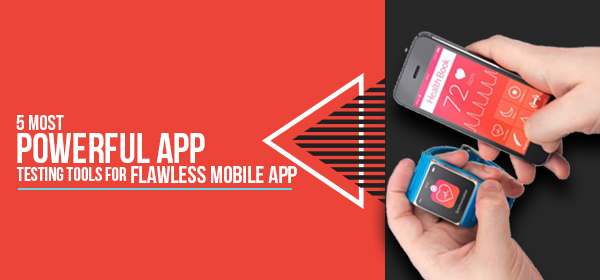The world of mobile app developers is struck with more intense challenges because of constant advancements in technologies, mobile app development trends and fickle nature of customers. Users are not willing to compromise on performance and quality, which means developers of modern era must consider users’ demand for high performance.
Not all the mobile apps become hit when they are launched. Some of them are never recognized. A study from digital trends confirms that merely 16% of mobile users think of using the mobile app again once they are dissatisfied. Optimal mobile app quality is therefore seen as a driving force for app success.
This blog will delve in how mobile app quality is critical for ratings, revenues and brand reputation followed by the tips to improve its performance.
How to perceive mobile app quality and performance?
Mobile application development is in a way a broad term that includes addressing a range of modern user requirements, technical challenges, resources management, testing and deployment, user experience, marketing and successive updates releases.
The success of the mobile app development process depends on whether or not your mobile app behaves to users’ satisfaction and fulfils all their needs. People who actually install and use it and navigate its different features will ultimately be the deciders of the quality of your mobile app. Hence, performance is key to deciding the measure of app quality.
Mobile app performance is subject to various components such as:
- The server
- Network quality
- Integration of APIs
- Interactions with device environment
- Coding methods
Sometimes users may experience abrupt app crash incidents or slow loading of content especially at the time of high rush in user activity during festive season or promotions. This implies poor experience for which app itself may not be entirely responsible. Hence, for anybody working in the domain of mobile app development, it is necessary to define a great app.
What is a best mobile app?
The great mobile app is the one that remains consistent in its performance even in inconvenient situations, face challenges of time, satisfies customers needs, loads faster and has pleasant user interface, impressive visuals and exciting features.
An ideal mobile app might be focused on single functionality, but it should do it exceedingly well.
How mobile app quality impacts on its success
Users are evolving in their expectations though young demographics are growing more demanding when it comes to exploring mobile apps, which adds challenges to the job of mobile app development. In one survey run by Dimensional Research, more than 90% users responded that app performance is quite critically important. A good performance can even compensate for the price concerns of an app.
Today’s users can’t tolerate even 3 seconds of delay before they see an app fully loaded on their screen. The optimal response time taken by the app to load usually comes down to 2 seconds.
A mobile app survey by Akamai says 47% of customers want web pages to load within just two seconds whereas 20% of them expect mobile apps to open instantly. This goes to say how important is it for mobile app development specialists to ensure optimal performance and quality of mobile apps.
Volatile nature of modern users
While many apps are joining the list of top grossing apps in popular App stores, apps that fail to engage users are losing on interest and revenue as well. Users are openly judgemental and are prepared to abandon your app the moment they realize your mobile app performance doesn’t go with their expectations.
The question of App ratings/reviews
App store ratings are quite an important part of ensuring your mobile app offers everything users want to buy. If your app doesn’t have quality enough to impress users or has minor errors or crash issues, they will leave unpleasant reviews and ratings and all the efforts invested in mobile app development will go in vain. Low ratings means less number of downloads, too. Even the slightest of drop in ratings affects the download rates to a great extent.
Benefits of commendable app performance
No doubt, users expect great returns for each penny they spend. If you app’s performance is flawless and smooth, you will gain more loyalty and spending from them.
Therefore, mobile app development veterans should know how performance directly impacts customer acquisition and revenue. For example, a case study by SOASTA revealed that even one-second drop in average page load time results in a 27% boost in conversion rate.
Another example goes to claim that after President Obama’s fundraising site increased its page load speed by 60% in 2011, it could raise $34 million more for the campaign.
This indicates how performance and app quality should be the primary concerns of any mobile app development company. Performance testing is an integral part of quality assurance and offers mobile apps a competitive strength.
How to improve Mobile App Performance
We have reached the part in our discussion where we should check the important actions needed to improve your mobile app quality and performance.
The app security
App security is the top priority for maintaining the highest quality of the app and keeping the download numbers up. In case of Android, the risks of your app being subject to cyber threats are likely. Personal information especially regarding payment is sensitive for users. Therefore, to ensure your app is appreciated by them, you should protect their private data with robust password layers and SSL certificate.
Personalization
Users adore personalized elements in the app if it is used in suitable places. Mobile app development should emphasize the important of personalizing settings, fonts, size, colours as it gives app users ability to interact with your app in their own style, which inspires engagement among users.
Compress the size of images
Compressing the image to resize it without lowering its quality is the best mobile app development practice to increase the app performance and cut down the load time. Choose the adequate size of the image for compressing it. compressor.io is one of the reliable image compression providers you can opt for.
Load the data economically
This factor is unknown to many emerging mobile app development firms. If your app contains a lot of data, try to load it as per the need. Users hate waiting to explore a tiny part of the app. Break down the content components and try to pre-fetch data so that when users want it, they get it without excessive load time.
Also, bring down the number of HTTP requests for page resources. It will not burden your app and let users enjoy quick loading.
Turn on the offline mode
If the network connection of user’s device drops during any action inside the app, it is a good practise to inform them the reason of incomplete action. Allow them to save the data for later so that they can start off where they left off after securing strong network. This approach helps sooth customers and win/ their loyalty.
Test frequently and proactively
Testing is a crucial part of mobile app development process. Make sure there is no compromise made when it comes to maturely testing the mobile apps. Your app must fulfil variety of tests to ensure it works consistently across all devices, platforms and networks and performs well without crash incidents.
Test the app for usability often during the development. It saves time and money and offers ease of fixing bugs when the app is tested through the development process.
The use of APM system
If you have a mobile app, you must understand the vitality of having an application performance monitoring (APM) system that helps buoy up the app quality by sensing and diagnosing performance issues for your app. Such performance management tools is dedicated to keeping your mobile app development on the right track while ensuring users enjoy uninterrupted service and your app serves computing functions healthily.
Some of the companies that offer APM tools are New Relic, AppDynamics, HockeyApp and Flurry.
Concluding notes
The quality and performance of your mobile app act as oxygen to your mobile app development phase. It decides user retention, ratings, number of downloads, conversion, and ultimately, revenue. Since users have become smart in their choices, you must maintain the app quality to observe more traffic to your mobile app. If you create a high-quality app that satisfies user’s expectations, users will rush to your app more often, elevating your brand reputation.








